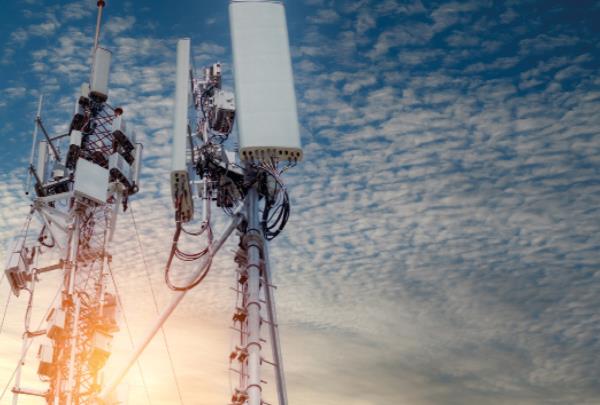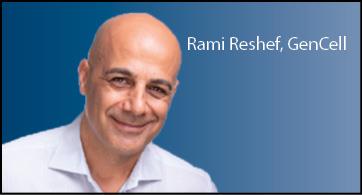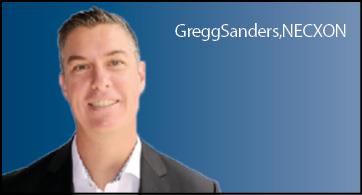11 April 2022

Energy, climate change and the environment continue to make headlines and the telecom sector is one of the biggest offenders when it comes to pollution. Robert Shepherd finds out what African telcos and towers are doing about going green
The environment is always – pardon the pun – a hot topic. From climate change and the filth that we continue to pump into the air, to tenacious campaigners gluing themselves to trains, there’s always something to furrow the global brow.
Now that COP26 is behind us, countries around the world start to make promises about how they are going to meet various net - zero deadlines. You know COP? It’s that event to which world leaders and other people in authority burn fuel by the gallons on private jets in order to tell the rest of us how the problem is going to be addressed.
While the aviation industry quite rightly takes one for the team when it comes to the biggest recidivists in the world, the telecommunications sector certainly has a lot to answer to in this space.
Mobile operators and the GSMA are taking collaborative action to be fully transparent about the industry’s carbon emissions and have developed an industry-wide climate action roadmap to achieve net-zero greenhouse gas (GHG) emissions by 2050, in line with the Paris Agreement. The GSMA says that globally, more than 50 mobile operators now disclose their climate impacts and GHG emissions via the internationally recognised CDP global disclosure system. The mobile sector has also been credited by the UN for achieving a critical breakthrough towards its mission of combatting climate change.
If we take sub-Saharan Africa as an example, the use of diesel generators to power mobile towers in off-grid locations and for back-up power in urban areas where public power supply can be irregular is a notable source of GHG emissions.

“Logistics are a challenge but that is also a positive for moving from diesel as the frequency of refuelling can be significantly reduced also improving network resilience and reducing operating costs”
However, as far as the world’s second largest continent is concerned, one opinion is that we shouldn’t be too hasty to harbour expectations or indeed judge, as there are lots of variables at play.
“Making generalisations about a continent as diverse as Africa is difficult,” argues Rami Reshef, chief executive officer, GenCell. “Attitudes towards green power (and its deployment in telecommunications) vary greatly across the region. Oil rich nations such as Nigeria are still very much dependent on diesel while Morocco, for example, has made huge strides towards solar and wind energy.”
Indeed, Reshef points to the fact that “some countries that have hydropower are leapfrogging from fossil fuel-based grids” to clean power. “Certainly, the enormous capacity of sun and wind over the continent create for Africa enormous potential for production of renewable energy, supporting much discussion about enabling export of renewable energy from Africa to Europe,” he adds. “But, in general, the transition to renewable technology in Africa is slow – the adoption cost and skills required to build and use clean power can be a limiting factor.”
Although, as Reshef puts it, migration to renewable energy in Africa is “slow”, Alessandro Ravagnolo, partner, Analysys Mason, says “there are many examples as most towercos - at least those that manage power – are moving to hybrid solutions to reduce their dependency on diesel and reduce costs”. He adds: “It is not just a matter of reducing diesel consumption, but also reducing the truck rolls required to re-fuel tanks. This is particularly important in emerging markets where power grids are not ubiquitous and/or do not offer a reliable service.”
However, Alistair Munro, founder and chief executive officer at renewable energy firm Ryse Energy, says that Africa operates with a significant number of towers in bad-grid or no-grid areas so it really is essential that diesel is displaced from the energy mix on the basis of cost and for sustainability. “In terms of natural resources Africa has excellent solar and in many areas wind resources for in terms of available resources yes Africa is well positioned,” he adds. “Logistics are a challenge but that is also a positive for moving from diesel as the frequency of refuelling can be significantly reduced also improving network resilience and reducing operating costs.”
So, which operators and/or tower companies are leading the way with migration to renewables? Munro says, “almost all of the public tower companies have made a commitment to migrate to renewables” and cites IHS, Helios, ATC as having made statements on their sustainability targets.
Although there is evidence to suggest, even prove, that the African telecom sector is making inroads when it comes to using renewable energy, solar, wind and wave power are hardly new – they’ve been around since the dawn of time. With that in mind, why in 2022 are operators and towercos still not further down the road?
“We are seeing this change but with such a growth in the sector in terms of new towers the operators are more focused on expanding capacity than displacement of diesel,” says Munro.

“Oil rich nations such as Nigeria are still very much dependent on diesel while Morocco, for example, has made huge strides towards solar and wind energy”
So, would it be fair to say that any reluctance or slow move to green energy is a political or business decision? “Any decision to move to green/renewable energy has to be a business-driven decision,” argues Munro. “These are businesses so there has to be a positive effect to the bottom line and the environmental and sustainability benefits are secondary. There is a limited regulatory framework in these markets unlike in Europe and other countries so there is limited ‘political’ involvement in the decision-making process from our view.”
One of the most recognisable players in this space is NEC XON, which has a strong track record of doing in terms of renewable energy with regards to base stations.

“They reduced human error and greatly improved process adherence through process automation. They gained significant operations, maintenance and workforce efficiencies and performance improvements.”
The company’s modular energy storage and IoT-based remote monitoring and management solution with managed services helps tower companies, mobile network operators and many other types of businesses improve uptime and profitability, often in remote and difficult to reach locations, cut operating costs and maximise profitability.
“We helped one of the tower companies which manages tens of thousands of towers,” says Gregg Sanders, head of digital X at NEC XON. “They cut mean time to repair (MTTR) from more than five hours to just one-and-a-half hours. They achieved up to 95% failure prediction accuracy on key equipment. They slashed mean-time-to-detect (MTTD) from hours to sub-second. They reduced diesel theft by between 12% to 15%. They reduced NOC staff reliance to less than half. They reduced human error and greatly improved process adherence through process automation. They gained significant operations, maintenance and workforce efficiencies and performance improvements.”
The Hybrid Storage Solution (HSS) from NEC XON provides battery storage, control system, solar panels, diesel generators, and IoT-enabled sensors for data collection. It is combined with AI data analyses and historical weather data. That enables operators to reliably power base stations for communications networks and other uses in regions with under-developed infrastructure.
NEC XON says the HSS solution, which includes sizing and planning, is currently used in South Africa, Kenya, Nigeria, Tanzania, Ethiopia and Democratic Republic of the Congo (DRC).
The good news is we have a lot of options when it comes to renewable energies – but is one source better than the rest?
Munro argues that they are technologies that should be viewed as complementary toward each other, rather than competitors. ““The combination of wind and solar in combination with energy storage harvests the maximum amount amount of renewable energy,” he says. “Solar as a stand alone technology only generates for a maximum of 8 hours per day therefore capital expense, energy storage capacity and land space needs to be significantly increased if this is the only source of renewable energy. The addition of wind into the energy generation mix maximises the generation from the available natural resources and optimizes energy storage capacity. In this way the combination of wind and solar gives the best performance considering all the parameters in telecom and critical infrastructure applications.”

Reshef holds the view that every form of renewable energy has pros and cons and all are needed to achieve our ambitious global targets. He says the “best” power solution varies greatly depending on factors such as location, weather patterns, availability of resources etc. “Hybrid projects can integrate the benefits of different types of renewable energy together such as intermittent solar or wind resources reinforced by reliable long duration fuel cells powered by hydrogen,” Reshef continues. “Green technology is constantly evolving to make all forms of renewable energy cheaper, easier to deploy and more widely available. With any luck, these factors will help renewable energy sources to achieve progressively faster growth over time as they become a more obvious choice over fossil fuel alternatives.”
Nevertheless, Reshef is keen to highlight the fact that reliable, resilient and efficient hydrogen power driving fuel cells is a key part of a sustainable future. He then explains why hydrogen has some key advantages over other forms of renewable energy.
“Hydrogen is the most abundant element in the universe and thus presents an almost unlimited amount of fuel on which to draw,” he adds. “It has an energy efficiency comparable to that of fossil fuels and its availability is not dependent on local meteorological and geographical conditions. It also produces no emissions at the point of use, making it an incredible green power source. Its primary challenges are around the cost and complexity of production, transportation and storage.”
Swedish firm Ericsson also has a list of case studies as long as your arm when it comes to helping operators in Africa reduce emissions and use more renewable energy.
For example, the Ericsson Radio 6626 combines two frequencies and six ports in one unit to power all three antennas on the tower. It adds dual-band support for FDD in the 1800MHz and 2100MHz frequency ranges in a triple-sector radio form-factor to reduce the number of radios on the tower from six down to one.
Rival Nokia recently announced the commercial availability of its Liquid Cooling AirScale portfolio. Its “first-of-its-kind” solution is designed to make radio networks more sustainable and cost-efficient by reducing the energy required to cool a base station.
“5G networks and technologies will play a critical role in making other industries more sustainable and we must all play our part to minimize our footprint and accelerate the use of green electricity,” says Tommi Uitto, president of mobile networks, Nokia.
Daryl Schoolar, research director at IDC, says that controlling total cost of network ownership remains an important priority for mobile operators.” A significant portion of that total cost of ownership comes from operating expenses,” he adds. “Network solutions that can lower those operating expenses, which includes cost of energy, are certainly welcomed by mobile operators. Also, if those solutions can help an operator achieve its green energy goals, that is just another added plus.”
Whatever the will of governments, operators, towercos or just people, Reshef says the transition to renewable energy is challenging for any country. “There are a number of political and social factors involved, as governments need to marshal political capital and resources to encourage the sector and promote acceptance in the wider public,” he adds. “Similar challenges exist within the private sector, where the decision to transition to renewables often comes down to the short-term reliability and availability of conventional power versus the long-term sustainability and cost-effectiveness of green power. It is a difficult debate, but one that is very much worth having.”

On the plus side, GSMA says that nearly half of all towers in sub-Saharan Africa are still categorised as either off-grid or bad-grid, and more than 80% of these continue to run on diesel power. Furthermore, the seven million metric tonnes of CO2e emitted from mobile towers’ diesel generators was estimated to account for approximately 3% of the industry’s total emissions in 2020.
Renewable energy will be essential to the mobile industry meeting its climate targets. Nearly 70,000 towers worldwide are powered by renewable energy – a 45% increase since 2014.
“Africa is abundant in natural resources that make it an ideal environment for the growth of renewable energy,” says Reshef. “The continent has an expanding population and vast economic potential, driven by the innovation and growth of many African businesses and communities. As mentioned above, with both internal and international support, it is probable that Africa will become an important exporter of clean energy. This has been evidenced in north Africa, where Morocco has made tangible steps to export renewable and sustainably produced hydrogen and ammonia to Europe.”
However, it’s not just the north that’s making significant progress. GSMA says that despite having only about 3% of the world’s towers, sub-Saharan Africa now accounts for 14% of global green sites. This reflects the investment by operators and tower companies in innovative green energy solutions to reduce CO2e and the operating cost of mobile towers. For example, Africa Mobile Networks (AMN), which provides a network-as-a-service solution to operators, is building small cell networks at scale in Africa. These sites are optimised for – and powered exclusively by – solar photovoltaic battery systems, with no diesel generator backup.
Reshef concludes by saying that there is a greater impetus to deploy small solar and wind installations in places where the population is sparse or terrain is prohibitive - for instance, in remote mountainous regions with limited infrastructure. “In these areas, renewable energy can actually be easier to deploy and more effective than traditional fossil fuel-based energy sources,” he says. “As with many other areas across the globe, there is emerging grassroots support for green power in Africa.
Development banks and other commercial organisations are recognising the opportunity that developing green energy infrastructure for many use cases including telecoms represents. If these moves are successful, this will spur the market on to greater change and investments.”
Nevertheless, even with all the right kit made available, Reshef says the decision to ‘go green‘ can be a difficult one for governments and businesses to make. “The crucial fact to remember however, is that moving to renewable energy is in the interest of everyone, most obviously because we know it is necessary for our continued survival on this planet,” he adds. “In addition, we also know that a continued dependence on fossil fuels is an unsustainable strategy that is leading us to irreparable climate disaster if we don’t drastically reduce emissions as soon as possible. If businesses do not transition in the short term, the long-term consequences will be catastrophic.”
The mobile telecommunications industry in Africa is in a transitional phase with changing industry structure and dynamics. Africa currently has over 800 million mobile connections and nearly 450 million unique subscribers. The coverage of mobile network has varying range from 10% to 99% across countries in Africa with an average of 70% mobile coverage. Using renewable is high on the agenda, as evidenced above. It just takes time.






